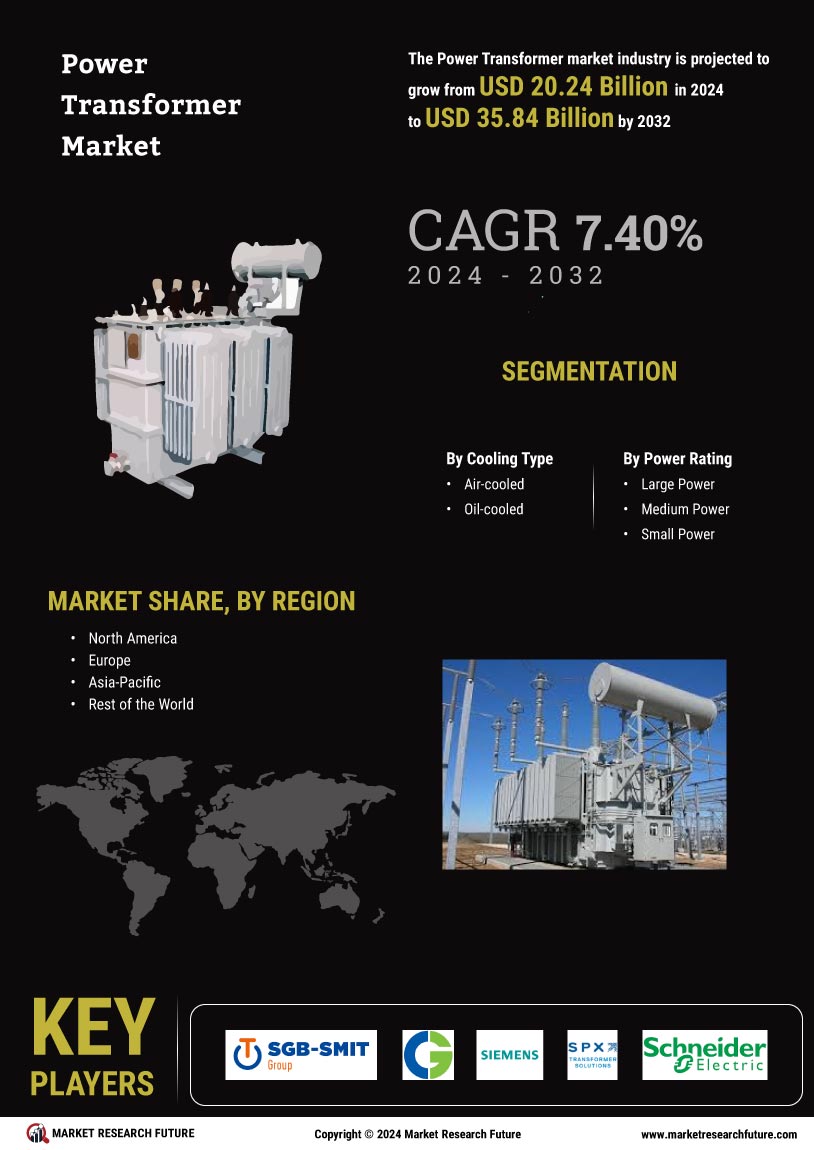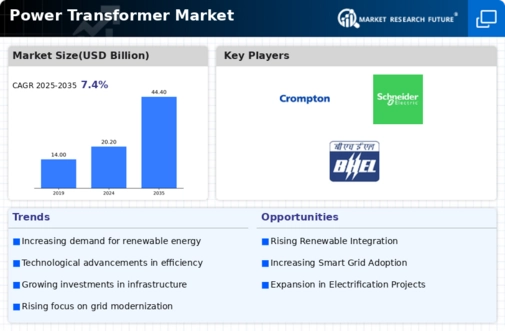Rising Demand for Electricity
The increasing demand for electricity across various sectors is a primary driver of the Power Transformer Market. As urbanization and industrialization continue to expand, the need for reliable and efficient power distribution systems becomes paramount. According to recent data, electricity consumption is projected to grow at a compound annual growth rate of approximately 4.5% over the next decade. This surge in demand necessitates the installation of advanced power transformers to ensure stable and efficient energy transmission. Consequently, utilities and energy providers are investing heavily in upgrading their infrastructure, which directly influences the growth trajectory of the Power Transformer Market. The need for enhanced grid reliability and capacity is likely to propel the market further, as stakeholders seek to meet the escalating energy requirements of both residential and commercial consumers.
Government Initiatives and Policies
Government initiatives and policies aimed at enhancing energy efficiency and sustainability are pivotal in shaping the Power Transformer Market. Many countries are implementing regulations that promote the use of energy-efficient transformers, which are designed to minimize losses during electricity transmission. For instance, regulations mandating the adoption of high-efficiency transformers are becoming more prevalent, encouraging manufacturers to innovate and produce compliant products. This regulatory landscape is expected to drive the market, as utilities and industries seek to align with governmental standards. Furthermore, financial incentives and subsidies for upgrading existing infrastructure are likely to stimulate investments in new transformer technologies. As a result, the Power Transformer Market is poised for growth, driven by the need to comply with evolving regulations and the pursuit of sustainable energy solutions.
Investment in Smart Grid Technologies
The transition towards smart grid technologies is significantly impacting the Power Transformer Market. Smart grids facilitate improved energy management, efficiency, and reliability, which are essential in modern power systems. The integration of advanced metering infrastructure and automated control systems necessitates the deployment of sophisticated power transformers capable of handling variable loads and ensuring optimal performance. Market data indicates that investments in smart grid technologies are expected to reach USD 100 billion by 2026, highlighting the urgency for utilities to modernize their infrastructure. This modernization often involves the replacement of outdated transformers with more efficient models, thereby driving growth in the Power Transformer Market. As utilities strive to enhance grid resilience and accommodate renewable energy sources, the demand for innovative transformer solutions is likely to increase.
Integration of Renewable Energy Sources
The increasing integration of renewable energy sources into the power grid is a significant driver of the Power Transformer Market. As countries strive to reduce their carbon footprints and transition to cleaner energy, the demand for transformers that can efficiently manage the variability of renewable sources such as wind and solar is rising. Data suggests that the share of renewables in the global energy mix is expected to reach 50% by 2030, necessitating the development of specialized transformers that can handle fluctuating power inputs. This shift not only requires new transformer installations but also upgrades to existing systems to accommodate the unique characteristics of renewable energy. Consequently, the Power Transformer Market is likely to experience robust growth as stakeholders invest in technologies that support the integration of sustainable energy solutions.
Technological Innovations in Transformer Design
Technological innovations in transformer design are driving advancements in the Power Transformer Market. The development of new materials and designs, such as amorphous steel and dry-type transformers, enhances efficiency and reduces environmental impact. These innovations are crucial as they allow for the production of transformers that operate at lower losses and with improved thermal performance. Market analysis indicates that the adoption of these advanced technologies is expected to increase, driven by the need for more efficient energy transmission systems. Additionally, the rise of digital technologies, including IoT and AI, is transforming transformer monitoring and maintenance practices, leading to enhanced reliability and reduced operational costs. As these technologies become more prevalent, the Power Transformer Market is likely to witness a shift towards smarter, more efficient transformer solutions.

















Leave a Comment